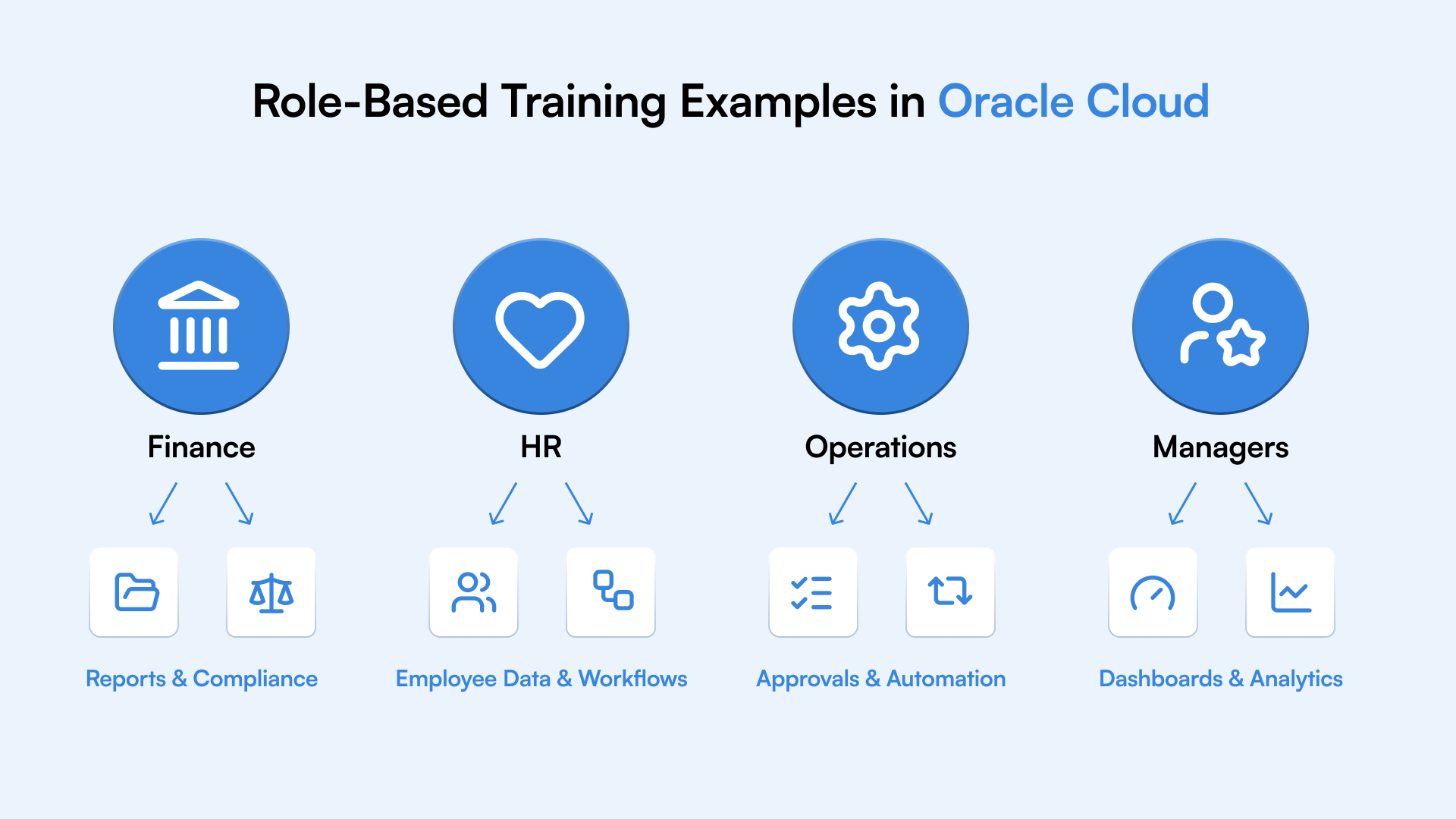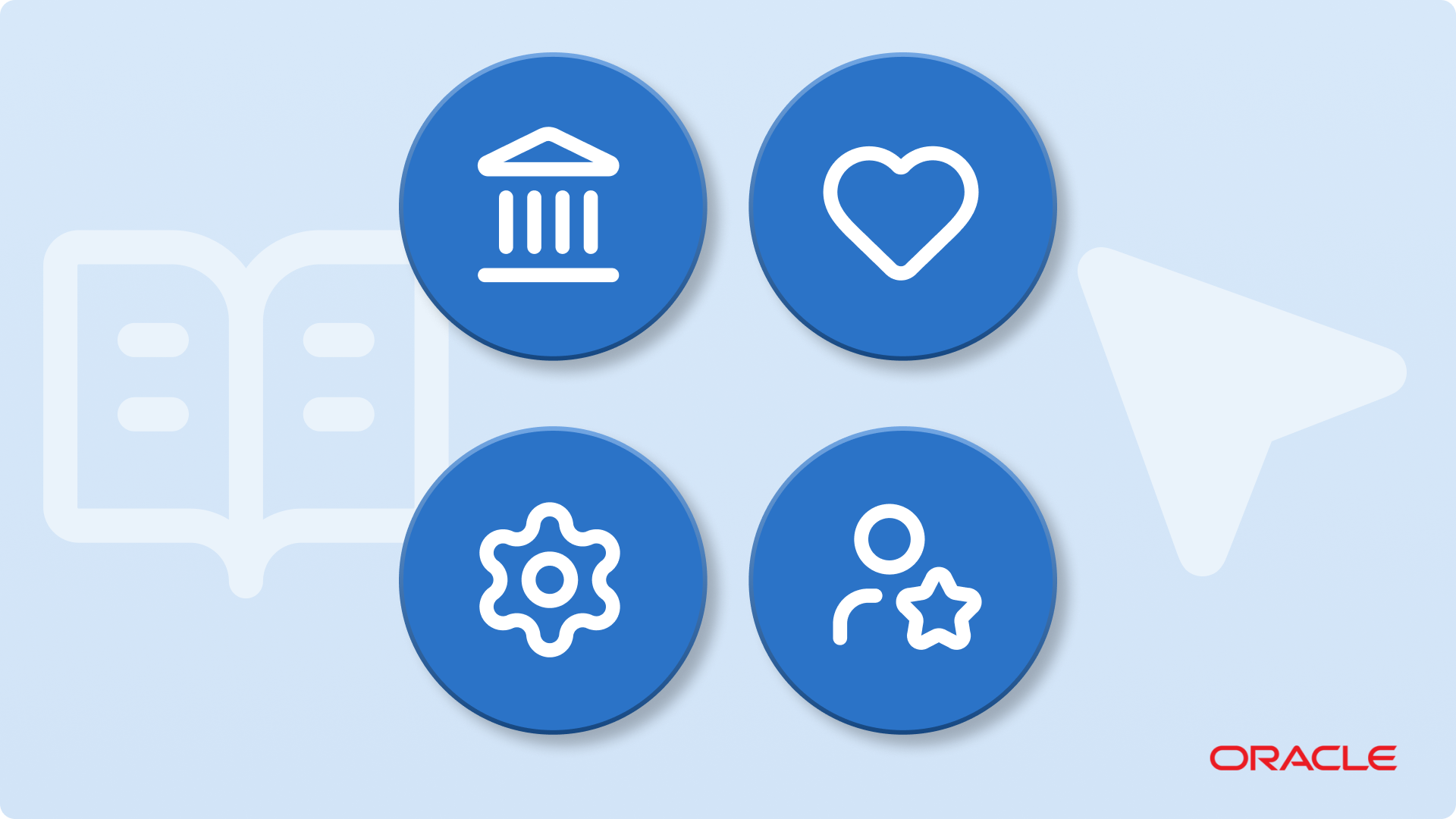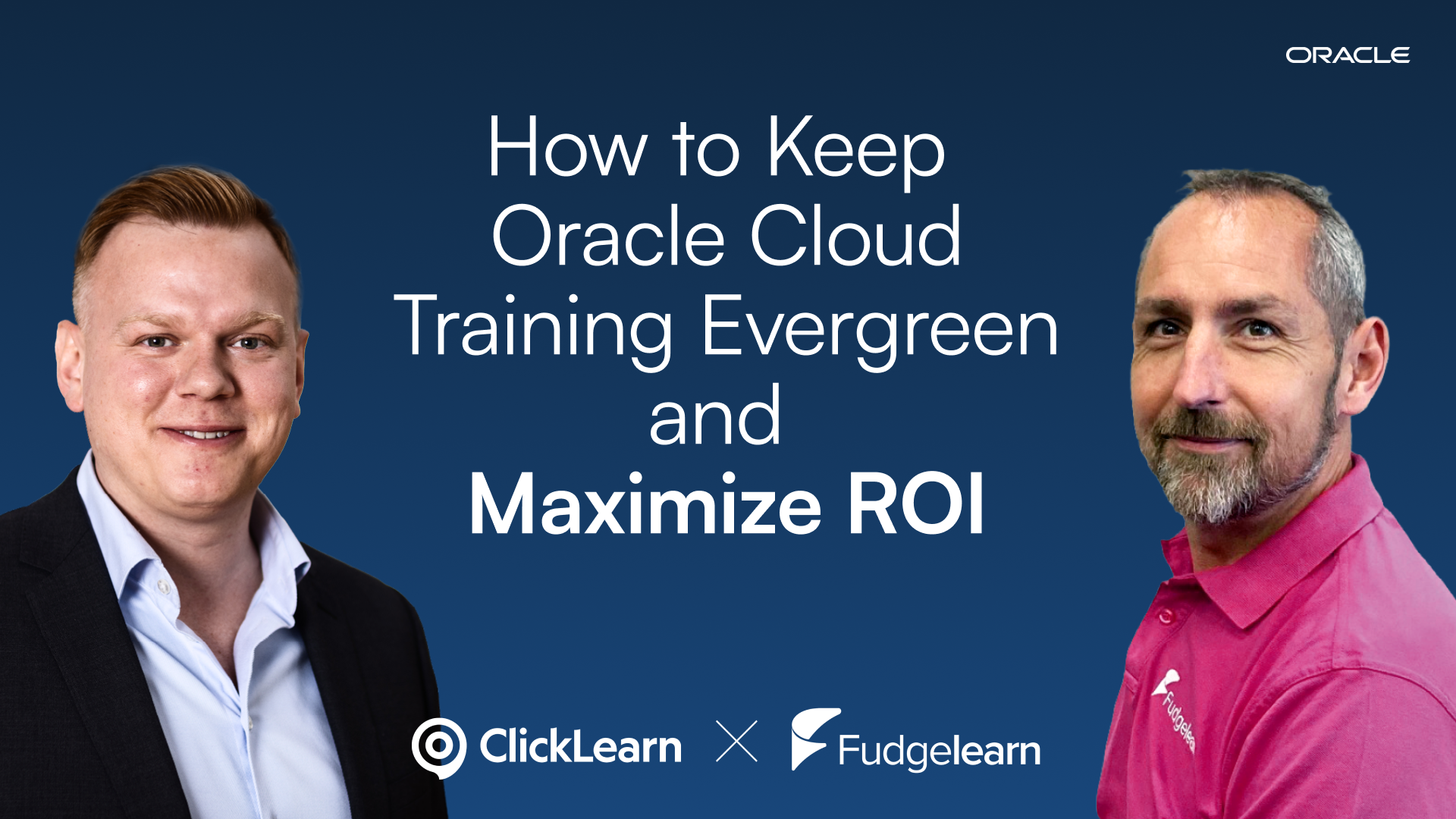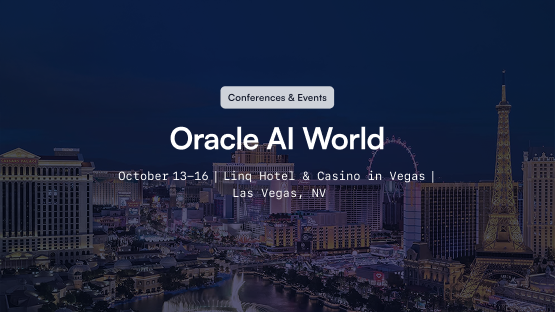Key Takeaways
For enterprises migrating to Oracle Cloud, successful adoption hinges on employee readiness rather than just technical implementation. Research indicates that over half of digital transformation projects falter due to employee resistance and inadequate training. To combat this, organizations that integrate effective change management with modern training techniques experience quicker ROI, fewer support inquiries, and enhanced user confidence. Key strategies include securing executive sponsorship, aligning change management with training, providing role-specific training, promoting continuous learning, utilizing in-app automation, tracking adoption metrics, and enabling IT as strategic partners in the adoption process. These approaches foster an environment where employees feel supported and capable, ultimately leading to successful Oracle Cloud adoption.
Action Items
- Secure executive sponsorship to prioritize Oracle Cloud adoption across departments.
- Integrate change management with training for a cohesive adoption strategy.
- Tailor training to specific roles to enhance relevance and engagement.
- Offer continuous learning opportunities beyond initial training sessions.
- Leverage in-app automation and guidance for real-time support.
- Track adoption metrics to identify areas needing reinforcement and adjust strategies accordingly.
- Empower IT teams to take a proactive role in supporting user adoption.
What are the most effective Oracle adoption strategies in 2025?
For many enterprises, migrating to Oracle Cloud is a strategic milestone – but true success isn’t measured by how quickly the system goes live. It’s measured by how well employees adopt it. Research shows that more than half of digital transformation projects fall short, not because the technology fails, but because people resist change or lack the training to use it effectively.
The good news? Enterprises that combine effective change management with modern training approaches consistently see faster ROI, fewer support tickets, and stronger user confidence. In this article, we’ll explore seven proven Oracle adoption strategies that can help you move from resistance to readiness:
Secure executive sponsorship
Align change management with training
Tailor training by role
Offer continuous learning, not one-and-done
Leverage in-app automation and guidance
Track and act on adoption metrics
Enable IT as adoption enablers

1. Secure executive sponsorship
Adoption starts at the top. Without visible leadership support, change initiatives often lose momentum. Executives set the tone by making adoption a business priority, not just an IT project.
Strong sponsorship means:
Allocating budget for both software training and change management, not only implementation.
Communicating a clear vision of why Oracle Cloud is being adopted and what success looks like.
Acting as champions for adoption across departments, ensuring managers cascade support to their teams.
When leaders consistently reinforce the importance of adoption – in all-hands meetings, newsletters, and one-on-ones – employees are far more likely to embrace the change.
2. Align change management with training
Training and change management are too often treated as parallel tracks, when in reality, they are two sides of the same coin. A well-designed adoption plan integrates both from the start.
This means:
Mapping training to change milestones. For example, offering targeted sessions during testing phases, not just at go-live.
Involving change managers in training design so that learning materials address real pain points and anticipated resistance.
Using communications, FAQs, and reinforcement campaigns alongside formal training to normalize new ways of working.
When training reinforces change management messaging – and vice versa – employees gain both the skills and the confidence to adopt Oracle Cloud with less friction.
3. Tailor training by role
One of the fastest ways to lose user engagement is to deliver the same training to everyone. Oracle Cloud touches many functions – finance, HR, procurement, operations – but the way each group uses the system is different.
Role-based training ensures that employees learn what’s most relevant to their daily work, without being overwhelmed by unnecessary information. For example:
Finance teams may need deep dives into reporting and compliance workflows.
Managers benefit from learning how to approve transactions or access analytics dashboards.
End users often need quick guidance on routine tasks like submitting expenses or updating personal details.
By segmenting training to match user personas, you reduce frustration and shorten the learning curve. The result is higher confidence, fewer support requests, and faster adoption across the organization.

4. Offer continuous learning, not one-and-done
Traditional ERP rollouts often rely on a flurry of workshops before go-live, leaving users with stacks of slides or manuals they’ll rarely revisit. The problem? By the time employees need to perform a real task, much of that training has already been forgotten.
Successful Oracle Cloud adoption requires training to be an ongoing process, not a single event. That means:
Reinforcing learning with refreshers after go-live.
Making short, contextual training available on demand, in the flow of work.
Updating content regularly to reflect Oracle’s quarterly releases.
When employees can access the right guidance at the right time – instead of relying on memory from a one-off session – they feel more capable and less resistant to change. This approach not only reduces help desk tickets but also keeps adoption momentum strong long after go-live.
5. Leverage in-app automation and guidance
Even with the best classroom and eLearning programs, employees often struggle when faced with real-world tasks inside Oracle Cloud. That’s where in-app guidance and automation tools become invaluable.
These tools provide:
-
Step-by-step help directly in the system, reducing the need to switch between manuals and screens.
-
Automated updates to training content whenever Oracle releases quarterly changes, ensuring documentation doesn’t fall out of date.
-
Contextual support that adapts to user roles and tasks, making learning more relevant and less disruptive.
Oracle itself has recognized the importance of in-app support with Guided Learning. Many enterprises also extend this capability with digital adoption platforms like ClickLearn, which automate documentation, deliver interactive guidance, and keep training aligned with the latest Oracle updates.
By embedding guidance into everyday workflows, organizations not only accelerate adoption but also empower IT and training teams to focus on strategic initiatives rather than endless support requests.
For a deeper dive into the challenges and solutions around Oracle Cloud user adoption, see our full guide on Oracle adoption and ClickLearn’s User Experience Panel (UXP).
See how ClickLearn works in your Oracle
8 Videos (27m)
-
1. Simplify how end-users connect with content 6:22
-
2. Master education within the flow of work 3:00
-
3. Craft training material in just a few clicks 2:39
-
4. Create training materials for diverse user needs 2:47
-
5. Keep training materials evergreen 4:02
-
6. Translate content into 45+ languages 4:20
-
7. Gain insights into user engagement and progress 2:49
-
8. Maintain brand consistency across all training materials 1:33
1. Simplify how end-users connect with content
Discover how ClickLearn centralizes training materials for easy access
6. Track and act on adoption metrics
You can’t improve what you don’t measure. Many Oracle Cloud projects track technical milestones – system uptime, data migration success, defect counts – but overlook the most important measure: are users actually adopting the system?
Key adoption metrics to monitor include:
System usage rates by department or role.
Time-to-productivity for new users after training.
Support ticket volume and themes, which reveal where processes or training need reinforcement.
Employee feedback through surveys or pulse checks.
Tracking adoption metrics provides early warning signs of resistance or knowledge gaps. More importantly, it creates a feedback loop: training teams can adapt content, change managers can target communications, and IT can focus support where it’s needed most.
Enterprises that make adoption metrics part of their project governance see higher ROI and a smoother transition, because they can adjust quickly instead of waiting for problems to snowball.
7. Enable IT as adoption enablers
In many organizations, IT is viewed primarily as the team that implements the system and handles support tickets. But in Oracle Cloud adoption, IT can – and should – play a more strategic role.
When IT teams shift from reactive troubleshooting to proactive enablement, the impact is significant:
They help configure in-app guidance and automation tools that reduce support demand.
They collaborate with training and change teams to ensure updates roll out smoothly each quarter.
They provide insight into usage analytics, helping the business understand where adoption is strong and where it needs reinforcement.
This transformation elevates IT from “system keepers” to business partners, ensuring Oracle Cloud is not just technically successful but fully embraced by its users.
By reframing IT’s role, enterprises create a sustainable foundation for adoption that lasts long after the initial rollout.
Combining automation with expert guidance
The Fudgelearn x ClickLearn partnership combines expert content with cutting-edge automation to deliver faster, smarter, and more cost-effective Oracle documentation. Organizations can save time, reduce costs, and – most importantly – empower users to get the most out of their Oracle investment.
As part of the Fudgelearn x ClickLearn partnership launch, Oracle clients can access an exclusive bundle:
Fudgelearn’s premade Oracle documentation library.
Try ClickLearn’s automation platform.
A tailored consultation to align documentation with your specific Oracle project goals.
👉 Book your demo today and see how your organization can accelerate Oracle Cloud ERP adoption.
From resistance to readiness
Adopting Oracle Cloud is more than a technology project – it’s a people project. Enterprises that succeed don’t just install software; they create an environment where employees feel supported, confident, and capable of using it.
By securing executive sponsorship, aligning change management with training, tailoring content by role, reinforcing learning continuously, embedding in-app guidance, tracking adoption metrics, and enabling IT as true adoption partners, organizations can move from resistance to readiness – and realize the full value of their Oracle Cloud investment.
Modern tools are making this journey easier. With digital adoption platforms like ClickLearn, enterprises can automate documentation, deliver contextual training directly in Oracle Cloud, and keep learning materials aligned with every quarterly update. The result? Faster onboarding, fewer support tickets, and sustained adoption across the enterprise.
Ready to explore how training automation can support your Oracle Cloud adoption? Learn more about how ClickLearn empowers organizations to make adoption stick.

Resources
New webinars, events and blogposts
Webinar
Event
Blog
🎯 Want to see ClickLearn in action?
If you’re planning an Oracle rollout – or any enterprise system launch – book a demo with Mark and discover how ClickLearn can streamline training, documentation, and user adoption at scale.
FAQ on Oracle adoption strategies
Oracle adoption strategies are structured approaches enterprises use to ensure employees successfully adopt Oracle Cloud applications. They often combine change management, role-based training, continuous learning, and in-app guidance to maximize ROI and minimize resistance.
Even the best Oracle Cloud implementation can fail if users don’t embrace it. Adoption strategies ensure employees are confident and productive, helping organizations reduce support costs, accelerate time-to-value, and achieve their business transformation goals.
Change management provides the communication, leadership support, and cultural alignment needed for employees to understand why Oracle Cloud is being adopted. Combined with training, it builds confidence and reduces resistance during the transition.
Training ensures employees know how to use Oracle Cloud effectively. Role-based, ongoing training — supported by in-app guidance tools — empowers users to perform tasks confidently and keeps knowledge fresh as Oracle updates quarterly.
Digital adoption platforms (DAPs) like ClickLearn support Oracle adoption by automating documentation, delivering in-app, role-based guidance, and keeping training content up to date with every Oracle release.


